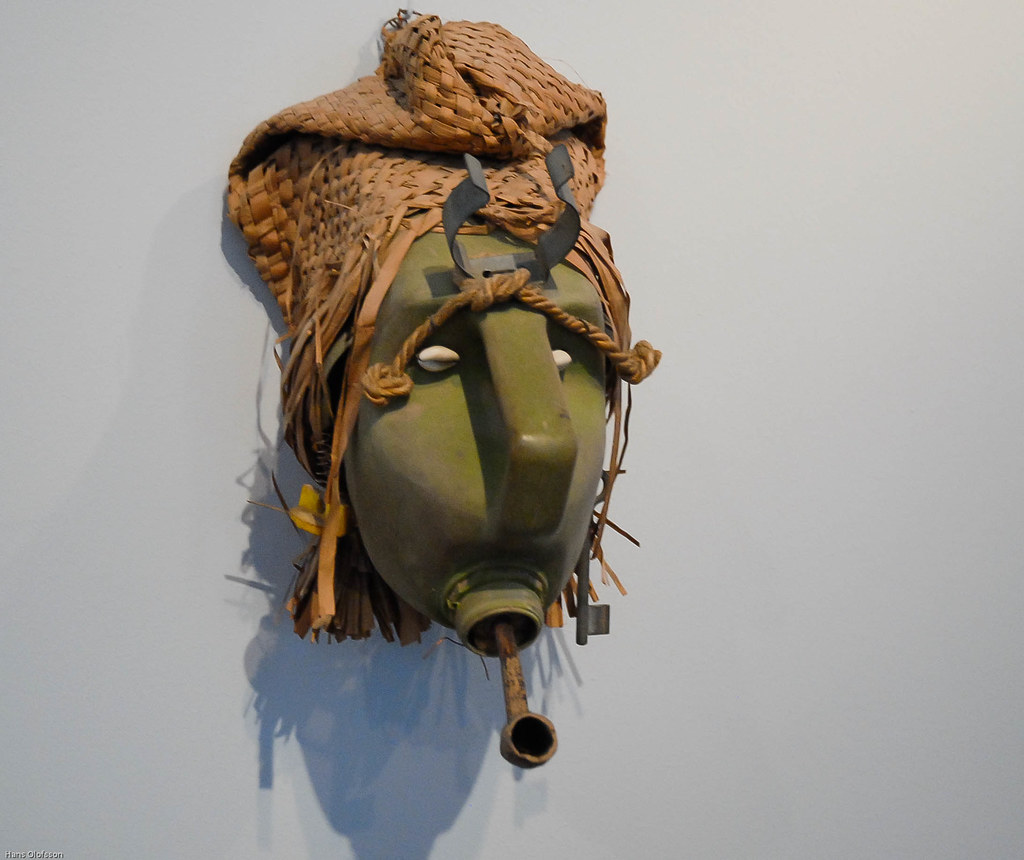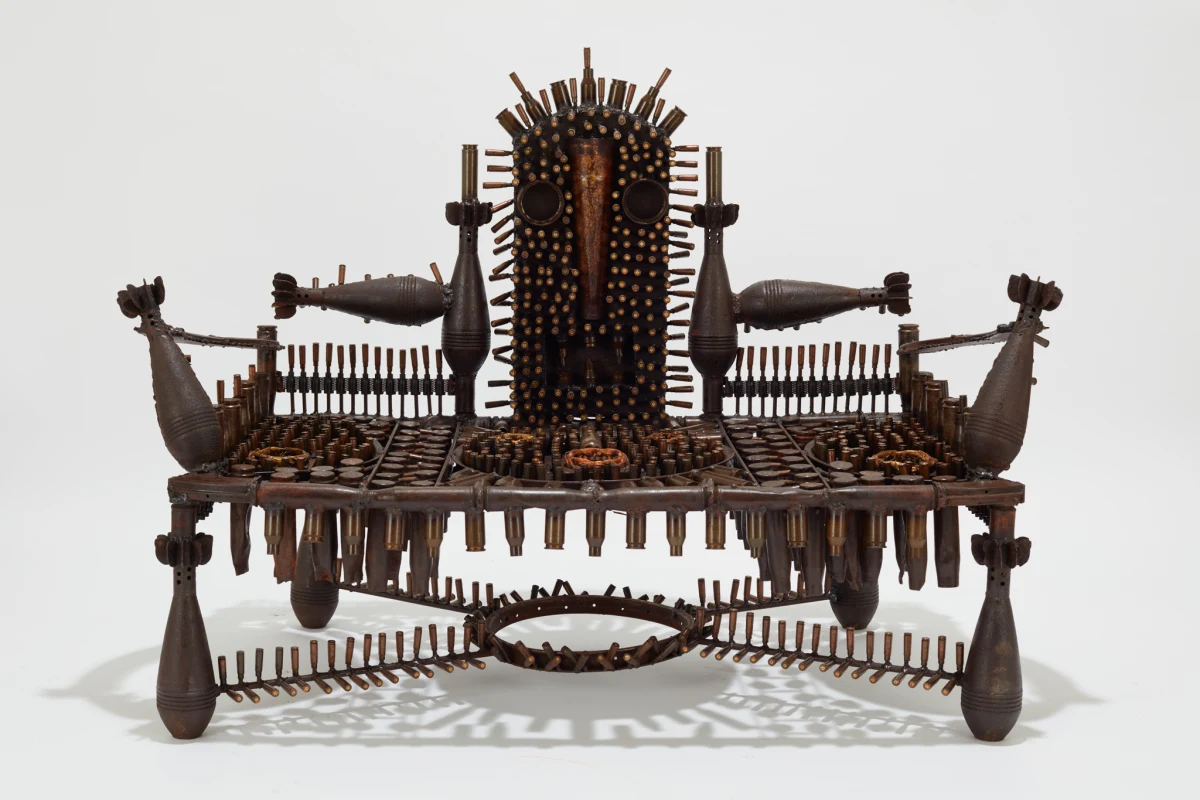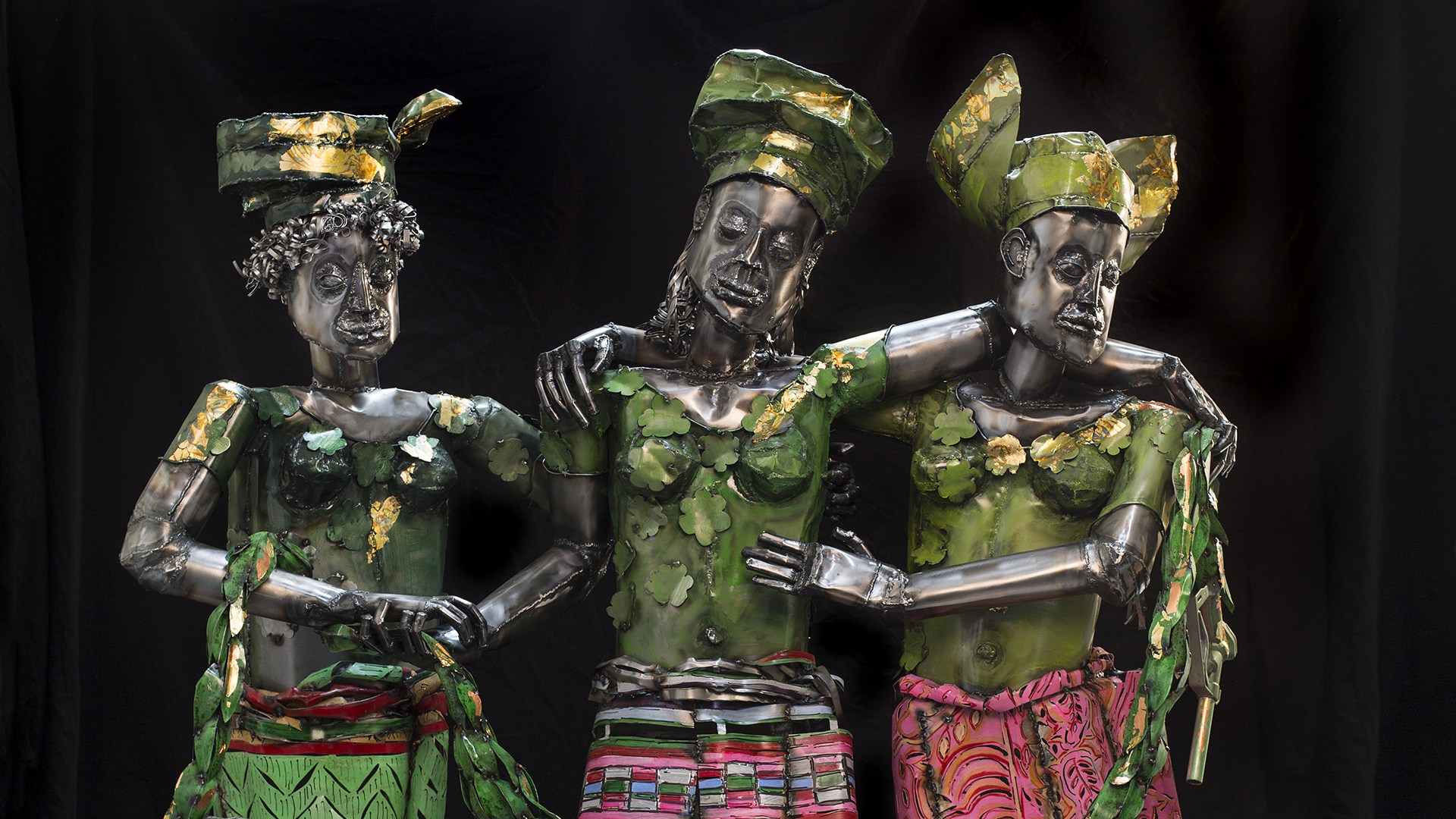Guest Writer – For Momaa.org
African Artists Working with Recycled Materials: Transforming Waste into Art
As a global environmentalist, writer, and journalist, I have dedicated my career to raising awareness about pressing environmental issues and promoting sustainable practices worldwide. One remarkable trend that has caught my attention is the growing number of African artists working with recycled materials. These artists not only transform waste into stunning pieces of art but also convey important messages about sustainability and our impact on the environment. In this journal, I will discuss the role of recycling in African art, provide an overview of notable African artists using recycled materials, and explore the impact of their work on society and the environment.
The Role of Recycling in African Art
Recycling has long been an integral aspect of African culture and traditions, with many communities repurposing materials to create functional and decorative items. This resourcefulness has extended into the world of art, where a new generation of African artists is embracing the concept of sustainability and incorporating it into their artistic expression.
The use of recycled materials in African art is also influenced by socio-economic factors, with many artists utilizing readily available waste materials as a cost-effective alternative to traditional art supplies. This innovative approach not only highlights the artists’ ingenuity but also raises awareness of environmental issues and the importance of reducing waste.

Notable African Artists Using Recycled Materials
El Anatsui
El Anatsui, a Ghanaian artist, is renowned for his large-scale installations made from discarded bottle caps and metal scraps. His intricate tapestry-like works are both visually striking and thought-provoking, reflecting on the interconnection between consumption, waste, and the environment.
Romuald Hazoumè
Beninese artist Romuald Hazoumè creates powerful mask sculptures using discarded plastic containers. His work draws attention to the impact of consumer culture on the environment and raises awareness of the global plastic waste crisis.
Sokari Douglas Camp
Nigerian-born artist Sokari Douglas Camp is known for her large-scale sculptures made from reclaimed steel and other metal materials. Her work often explores cultural and political themes, reflecting on the impact of industrialization on traditional African societies.
Chéri Samba
Congolese artist Chéri Samba incorporates recycled materials into his vibrant, thought-provoking paintings. His innovative approach to art highlights the potential of waste materials to be transformed into meaningful and engaging works.
Cyrus Kabiru
Kenyan artist Cyrus Kabiru creates unique eyewear sculptures from found objects and photographs them, highlighting the fusion of traditional and contemporary African aesthetics. His “C-Stunners” series has garnered international acclaim for its innovative use of recycled materials.
Gonçalo Mabunda
Mozambican artist Gonçalo Mabunda uses decommissioned weapons and other metal scraps to create powerful sculptures that reflect on the impact of war and violence. His work serves as a reminder of the destructive nature of conflict and the potential for transformation and healing.

The Impenetrable Throne, 2019
Ifeoma U. Anyaeji
Nigerian artist Ifeoma U. Anyaeji creates intricate sculptures from discarded plastic bags, transforming waste into beautiful works of art. Her innovative technique, called “plasto-art,” highlights the versatility of recycled materials and raises awareness of plastic pollution.
Justus Kyalo
Kenyan artist Justus Kyalo uses reclaimed wood and other found materials to create stunning sculptures and installations. His work explores themes of nature, humanity, and the environment, emphasizing the importance of conservation and sustainability.
Mbongeni Buthelezi
South African artist Mbongeni Buthelezi creates vibrant, textured paintings using melted plastic waste. His innovative technique, which he calls “plastic fantastic,” challenges traditional notions of art and highlights the potential of recycled materials.
Moffat Takadiwa
Zimbabwean artist Moffat Takadiwa creates intricate sculptures and installations from discarded electronic waste, bottle caps, and other found materials. His work addresses the issues of consumerism, waste, and environmental degradation, while also exploring the impact of globalization on African culture and identity.
The Impact of Art Made from Recycled Materials
The growing trend of African artists working with recycled materials has had a significant impact on both society and the environment. By transforming waste into art, these artists raise awareness of environmental issues and promote sustainable practices. Their work serves as a powerful reminder of the need to reduce our consumption, reuse materials, and recycle waste in order to protect our planet.
In addition to their environmental messages, these artists preserve and celebrate cultural heritage and traditional art forms. By incorporating recycled materials into their work, they demonstrate the potential for innovation within the African art scene and inspire a new generation of artists to explore the possibilities of working with sustainable materials.
Furthermore, art made from recycled materials often transcends cultural and geographic boundaries, attracting international attention and fostering cross-cultural dialogue. This global recognition not only raises the profile of African art but also contributes to a more inclusive and culturally rich global artistic landscape.
In summary, the transformative power of African artists working with recycled materials cannot be overstated. By turning waste into art, these artists challenge our perceptions of value, beauty, and sustainability, while also inspiring positive change and contributing to a more sustainable future.
The work of these artists serves as a testament to the importance of supporting and promoting sustainable art practices. By celebrating and engaging with their work, we can foster a greater appreciation for the potential of recycled art and encourage the adoption of environmentally responsible practices in the art world and beyond.
FAQs -African Artists Working with Recycled Materials: Transforming Waste into Art
Q: Who is the African artist who uses recycled materials?
A: There are many African artists who use recycled materials in their work. Some notable examples include El Anatsui, Romuald Hazoumè, Sokari Douglas Camp, Chéri Samba, Cyrus Kabiru, Gonçalo Mabunda, Ifeoma U. Anyaeji, Justus Kyalo, Mbongeni Buthelezi, and Moffat Takadiwa.
Q: Who is the famous recycled art artist?
A: There are several well-known artists worldwide who work with recycled materials. In the context of African art, El Anatsui and Romuald Hazoumè are two of the most famous artists who create work from recycled materials, earning international acclaim for their innovative and thought-provoking pieces.
Q: Who are the eco artists in Africa?
A: Eco artists in Africa are those who create art with a focus on environmental sustainability, often using recycled or found materials. Some examples include El Anatsui, Romuald Hazoumè, Sokari Douglas Camp, Chéri Samba, Cyrus Kabiru, Gonçalo Mabunda, Ifeoma U. Anyaeji, Justus Kyalo, Mbongeni Buthelezi, and Moffat Takadiwa.
Q: What are some artists that use recycled materials?
A: Artists who use recycled materials come from various backgrounds and work in different mediums. Some examples of artists who incorporate recycled materials into their work include:
- El Anatsui (Ghanaian)
- Romuald Hazoumè (Beninese)
- Sokari Douglas Camp (Nigerian)
- Chéri Samba (Congolese)
- Cyrus Kabiru (Kenyan)
- Gonçalo Mabunda (Mozambican)
- Ifeoma U. Anyaeji (Nigerian)
- Justus Kyalo (Kenyan)
- Mbongeni Buthelezi (South African)
- Moffat Takadiwa (Zimbabwean)
What are the advantages of transforming waste into art?
By reusing items that would otherwise end up in landfills or incinerators, you can help conserve natural resources, reduce greenhouse gas emissions, and prevent pollution. You can also save money by finding free or cheap materials that you can transform into something new and beautiful.
What is garbage art called?
A specific subgenre of found objects is known as trash art or junk art. These works primarily comprise components that have been discarded. Often they come quite literally from the trash. One example of trash art is trashion, fashion made from trash.
How do you repurpose waste?
Ways to reuse Donate items that are still in a good, usable condition to charities or charity shops. Repurpose glass, plastic and cardboard containers to give them another life. Carry a re-usable shopping bag. Re-use wrapping paper or gift bags. Convert old clothing, towels or sheets into cleaning rags/cloths.
What art can be made from recycled materials?
Bottle Cap Fish. ... Toilet Roll Bird Feeder. ... Recycled CD Spring Birds. ... Egg Carton Dragonfly. ... Water Bottle Fish. ... Tin Can Creatures. ... Homemade Wind Chimes. ... Papier-mâché Plant Pots.
How do you convert waste to useful materials?
5 Ways To Convert Your Household Waste Into Reusable Materials First, start by separating your household waste into dry and wet to make it easier for you. Your wet waste is your fruit peels, leftover foods, while your dry waste is your plastics, nylons, paper bags, put these waste separately. Next, you put your wet waste in a pot and wait for it to compost.





 No products in the basket.
No products in the basket.